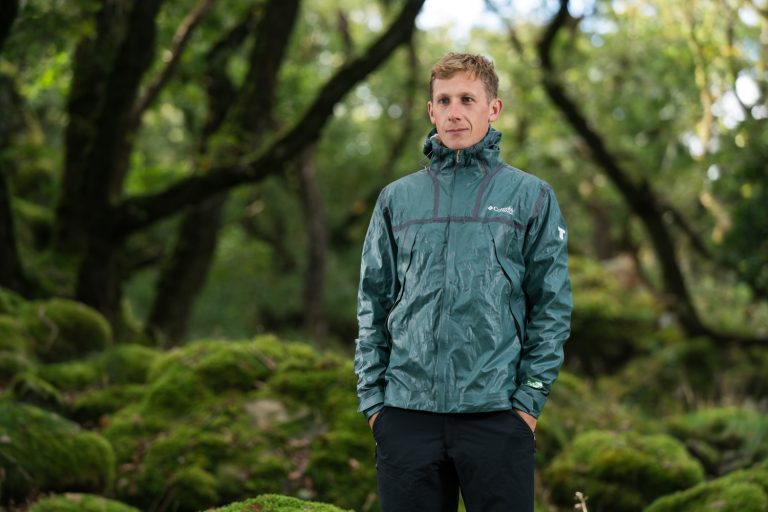We’re used to seeing innovations in the outdoor industry all the time – from new developments in fabrics and insulation to cutting-edge waterproof membranes. These advances generally promise to make your gear lighter, warmer or more breathable. As a result, it’s easy to get a little jaded, even cynical, about the latest new material or ‘revolutionary’ bit of outdoor kit. But when a particular technology has been a core part of a brand’s range for a decade, that’s when we tend to sit up and take notice. After all, when it comes to performance, there is no greater measure than the test of time. And that’s exactly why Columbia Omni-Heat merits a closer look.
“The largest amount of heat that the human body gives off is through radiation, so we decided to focus on that…”
First introduced back in 2010, Omni-Heat was Columbia’s innovative solution to a problem that the outdoor industry had been unable to solve: how to make your layers warmer without also making them thicker, bulkier, and sweatier. The answer came from within: use the wearer’s own body heat to generate warmth. The technology was eye-catching, consisting of hundreds of tiny metallic silver dots applied to the inner lining of Columbia garments to reflect the wearer’s body heat while simultaneously allowing excess heat and moisture vapour to escape. The figures were just as impressive: Columbia claimed that Omni-Heat could keep you up to 20% warmer compared to ordinary layers.
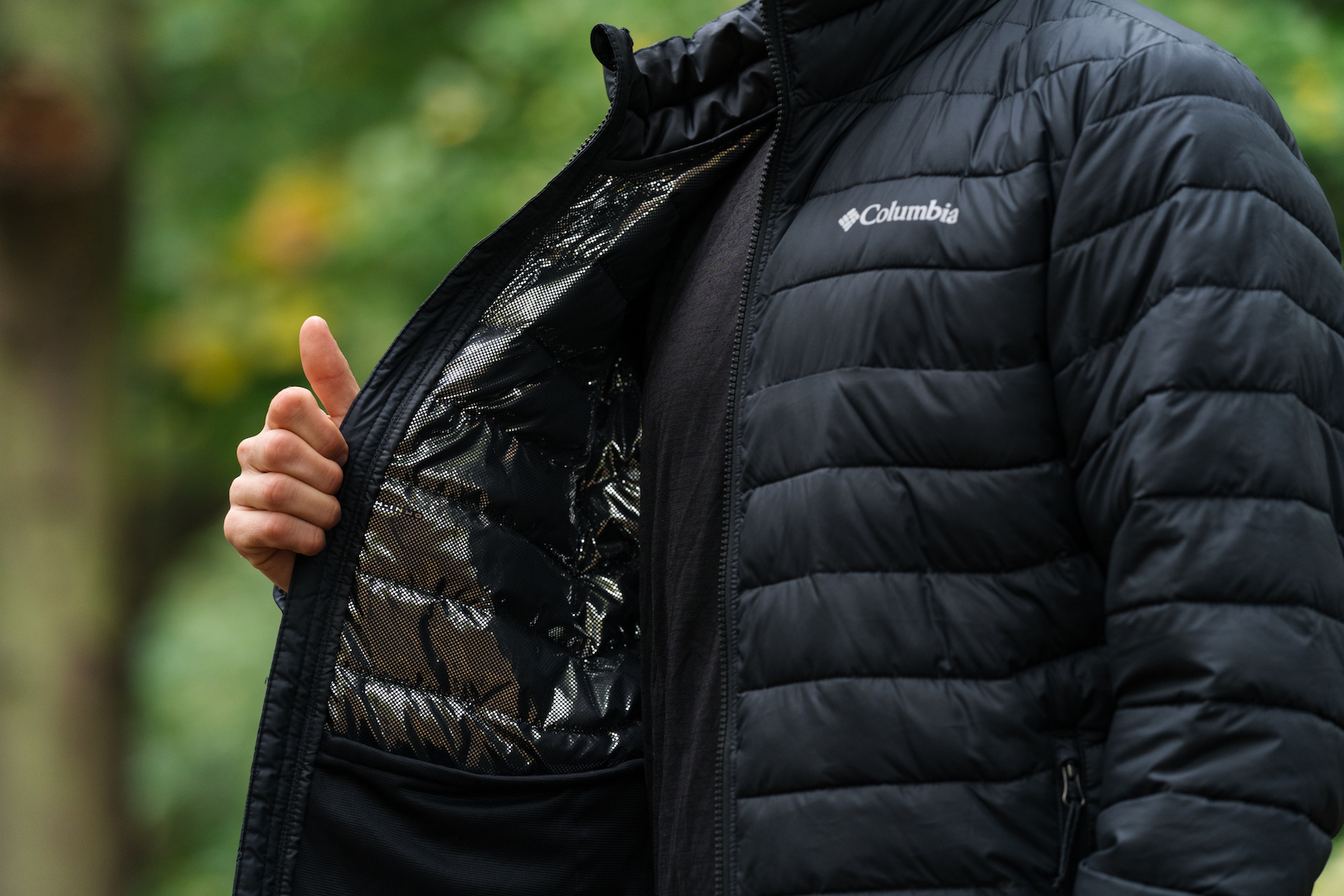
The first test for the new technology was the 2010 Winter Olympic Games. Columbia kitted out the Canadian Freestyle Ski Team with custom Omni-Heat gear. The team claimed two golds and a silver on home soil, an unqualified success.
They say you should go hard or go home, and with Omni-Heat, Columbia went big from the start, rolling it out across nearly 100 styles of apparel, footwear and accessories. The brand clearly believed in the tech. The gear reviewers and early adopters who got their hands on the first Omni-Heat gear agreed. But outdoor users hardly needed convincing, because Omni-Heat’s greatest selling point was this: you couldn’t just see the technology, you could feel it too.
The Science Behind Omni-Heat
To break it down simply, Omni-Heat works in almost exactly the same way as a ‘space blanket’, those metallic sheets given to marathon runners at the end of a race or to hypothermia victims by mountain rescue teams. Despite their extremely low weight and bulk, space blankets are so efficient that they can reflect up to 97 per cent of radiated heat. ‘You would never want to wear one of those, though – especially next to your skin, because it’s crinkly and uncomfortable and you’d sweat a lot,’ explains Jeff Mergy, director of global innovation at Columbia. ‘So we thought, “How can we create something that provides the benefits that this blanket does, but make it comfortable, breathable, and so that it can dissipate sweat if you’re being active?”’
That’s why in Omni-Heat garments, the reflective material is applied in a dot pattern rather than as a continuous sheet. But why focus on this, rather than on fabrics or fill, like almost everyone else? ‘The reason we tackled heat reflection is because a lot of other heat technologies, like insulation and down, only work by conduction,’ adds Mergy. ‘They hold heat inside of them and eventually max out because there’s only so much heat they can hold.’
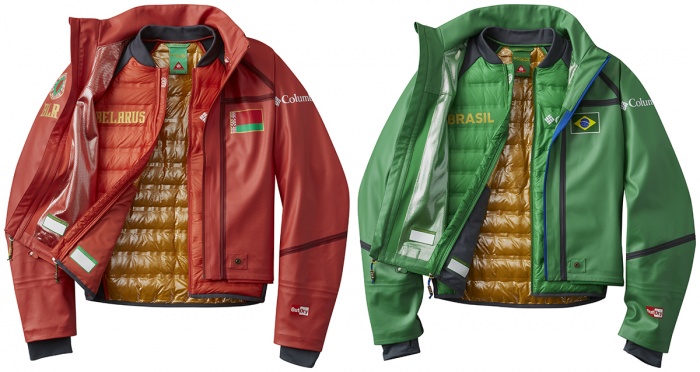
To understand this, you need to know that the human body loses heat in five different ways. First is evaporation: water cooling the skin, either through sweating or if wearing wet clothing. Then there’s conduction, when heat moves from a warmer surface to a cooler one (which is why you get cold when sleeping on bare ground). Next is convection, basically, ‘wind chill’. There’s also respiration: breathing out warm air from inside the body.
Lastly there’s radiation, which is the process of heat moving away from the body in cold air temperatures. Heat loss through evaporation and respiration increases in dry, windy weather conditions, while wet clothing greatly increases heat loss through conduction and evaporation. But in normal conditions, the body loses 65% of its heat through radiation, making this by far the biggest factor. ‘Knowing that the largest amount of heat that the human body gives off is through radiation, we decided to focus on that and a way to use that to warm us up,’ says Mergy.
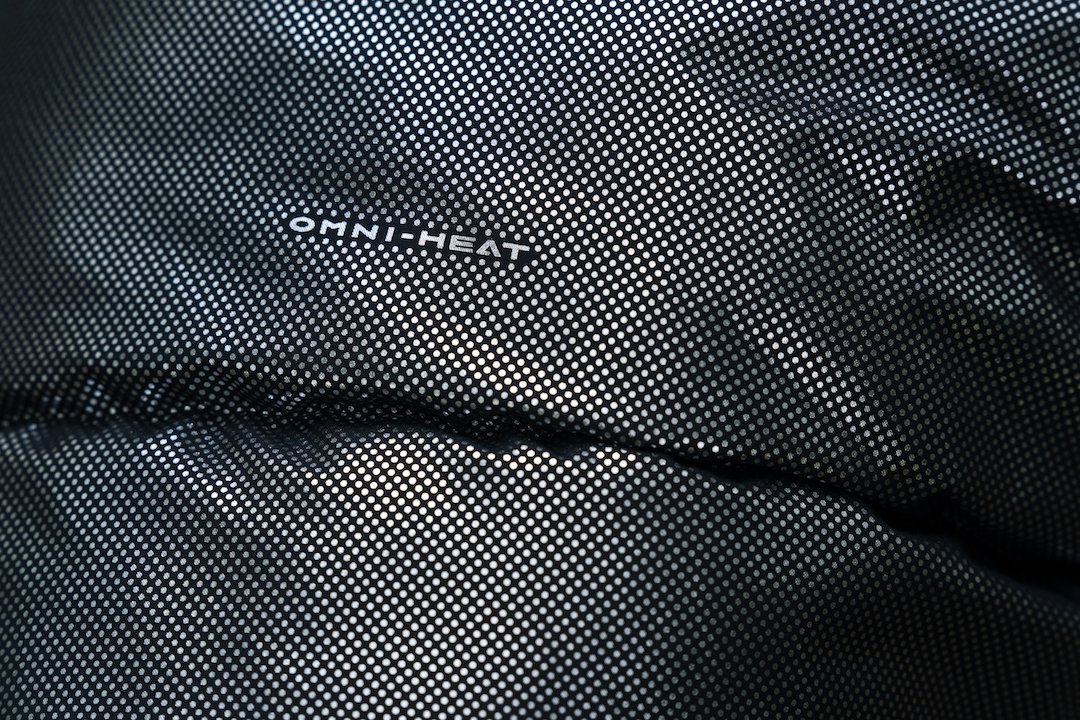
Of course, in the decade since Omni-Heat first appeared, Columbia has expanded the core technology. Omni-Heat remains the brand’s optimum solution for prolonged exposure to cold during activities requiring lightweight warmth. But in addition, other garments now also incorporate 3D Omni-Heat or Black Dot Omni-Heat. 3D Omni-Heat is an adaptation of the standard pattern of silver reflectors, with expanded coverage for enhanced heat retention. It also incorporates small pods of soft fibres that create an air gap between your body and the fabric. This enhances next-to-skin comfort as well as the lining’s insulating function. Black Dot Omni-Heat adapts the core tech and turns it inside out – or maybe outside in. It’s an outer layer of black dots applied to the face fabric of Columbia garments that acts as an external thermal shield, trapping warmth and capturing solar heat.
10 years on from the first Omni-Heat jacket, some of the latest items that are equipped with the tech include…
Horizon Explorer Jacket
This lightweight synthetic insulated jacket is stuffed with Columbia’s Thermarator polyester fill, offering good warmth-to-weight and superior wet weather performance, backed up with the proven Omni-Heat thermal-reflective lining to further boost warmth.
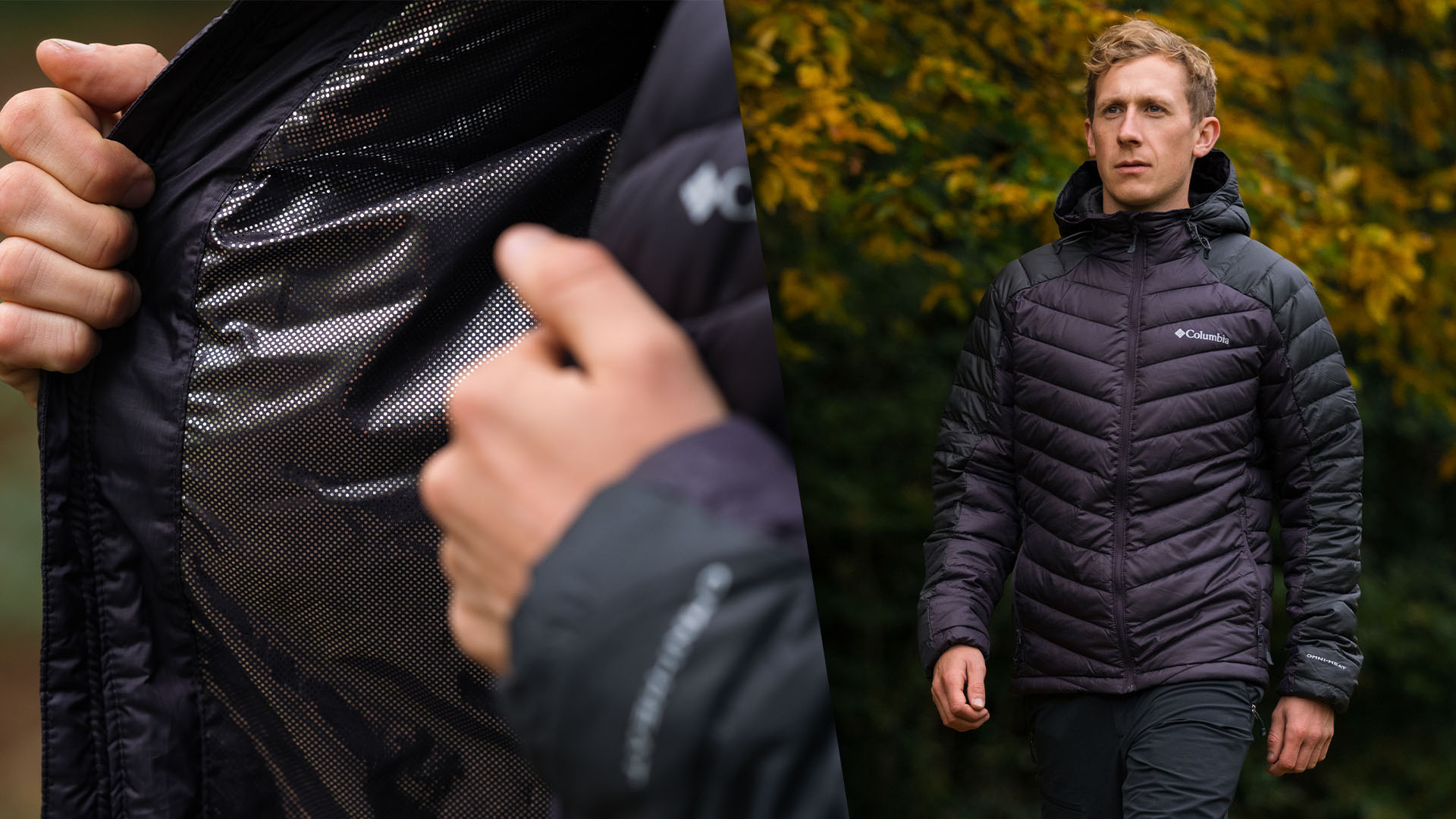
Slim, angled baffles are contoured for improved freedom of movement and give a more technical look, while the water-resistant polyester face fabric will fend off light showers. Elastic-bound cuffs, an adjustable hem and a drawcord hood all help you to lock in heat. As a versatile, packable warm layer for all sorts of adventures, the Horizon Explorer is a top pick.
Available from:
webtogs.com
Pike Lake Jacket
If you want the unmistakable aesthetic of a classic duvet-style puffer but the versatility of a modern synthetic jacket, Columbia’s Pike Lake is a great choice.
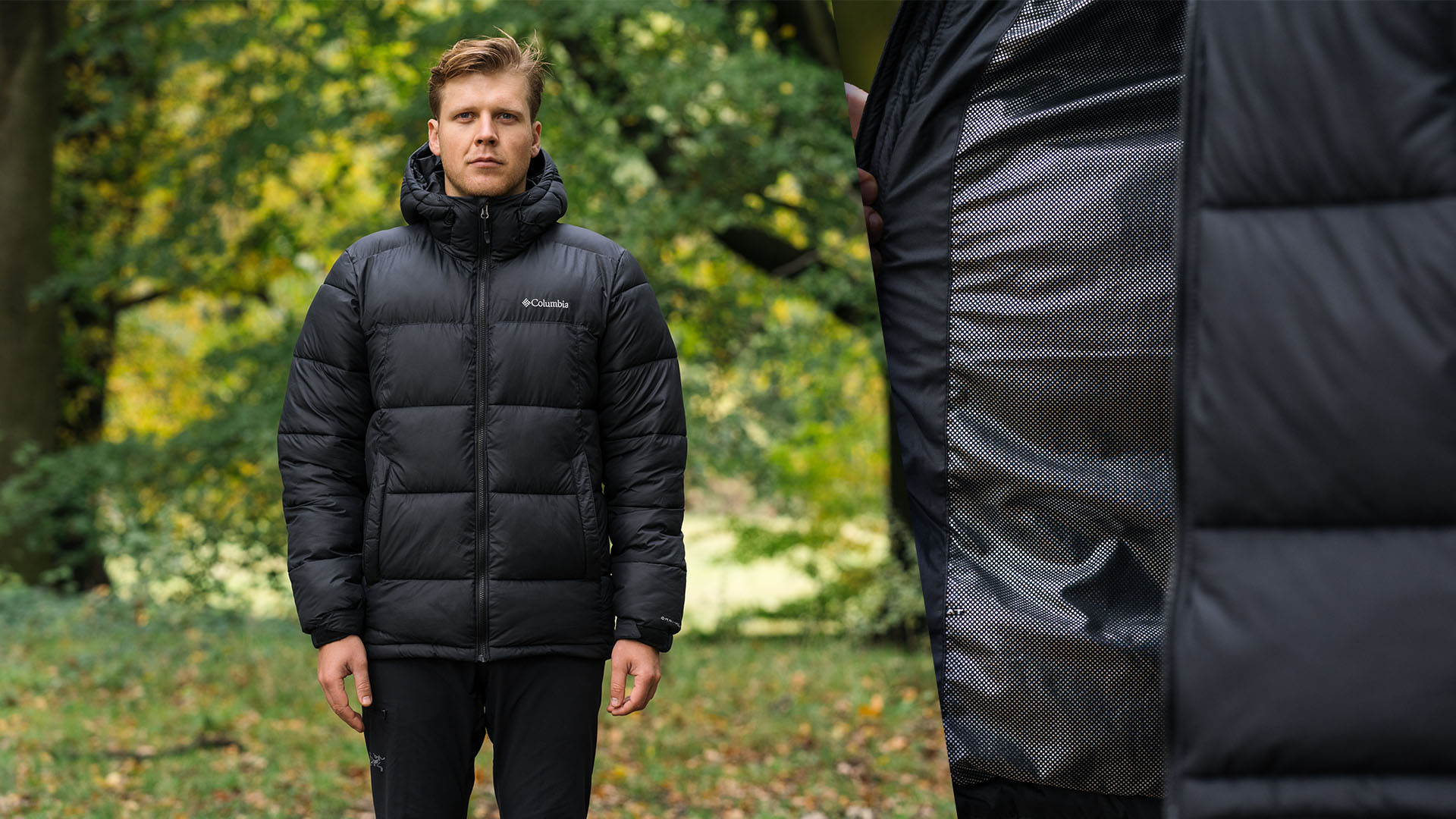
With its chunky baffles, it looks cosy, warm and inviting – and it doesn’t disappoint either, thanks to the brand’s Thermarator synthetic fill, backed by with that Omni-Heat thermal-reflective lining. In fact, with useful features like a water-resistant face fabric, drawcord hood with volume adjustment and Velcro-adjustable cuffs, we reckon this would also do a decent job as a belay-style jacket for more technical outdoor use.
Available from blackleaf.com
Shop men’s \ Shop women’s
Powder Lite Jacket
A great standalone layer for late autumn and early winter, the Powder Lite jacket also works well as a toasty midlayer for cold mid-winter walks or ski trips. In addition to the synthetic fill, there’s an Omni-Heat lining, which means that in terms of pure warmth terms this layer outperforms most of its rivals.
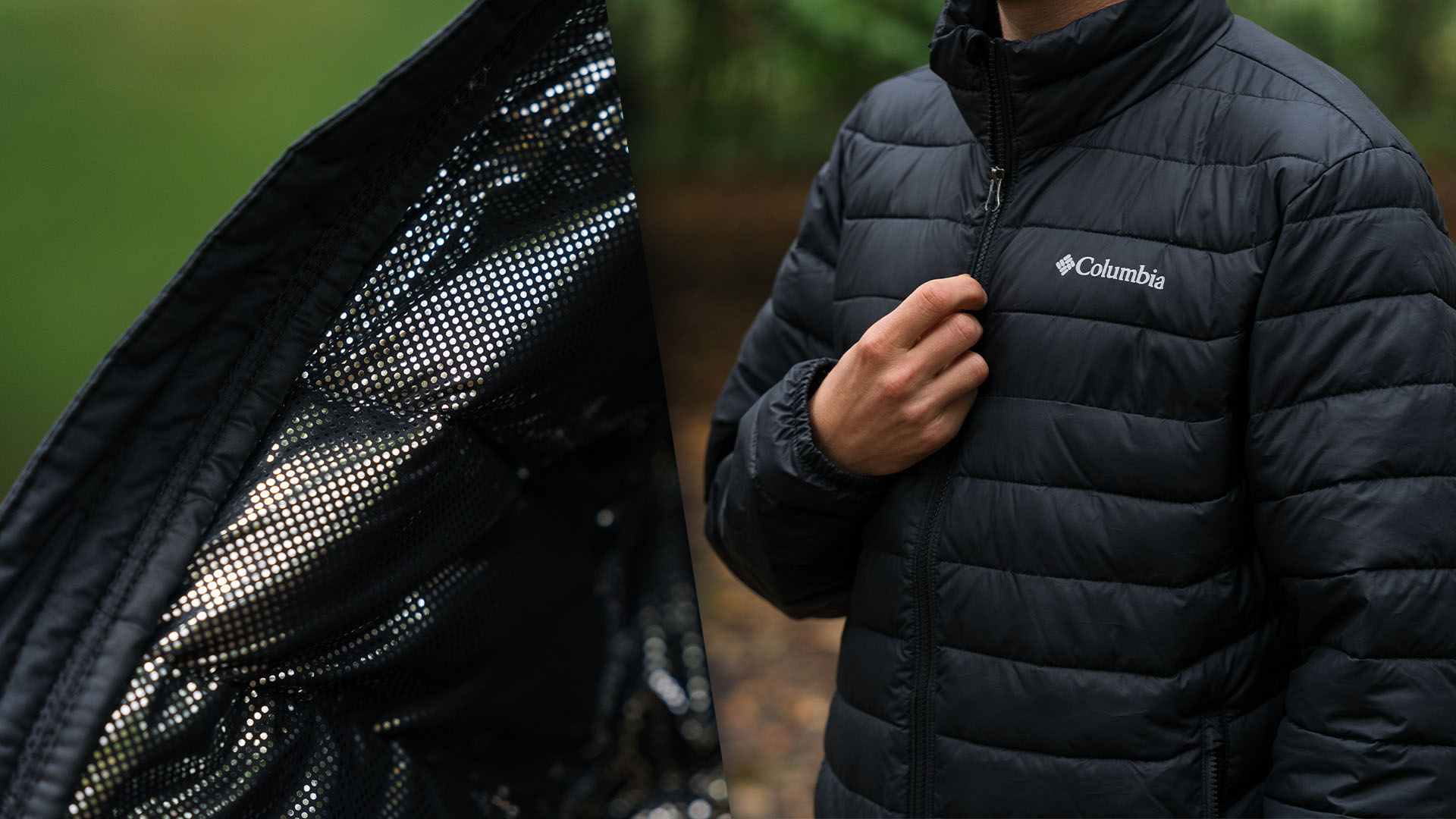
It has all the features that we look for in an insulated jacket too, including an adjustable, grown-on hood, hem drawcord, bound cuffs and zipped hand pockets, plus an inner security pocket. But the Powder Lite’s classic styling makes it versatile enough for casual wear too. It’s also worth noting that in addition to standard men’s and women’s fits, this one comes in big and tall sizes for men and plus sizes for women too.
Available from:
blackleaf.com
To see the latest picks from Columbia’s Omni-Heat range, as well as plenty of other great kit from the US outdoor giant – not to mention hundreds more brands – head over to online outdoor gear specialists Surfdome, or their sister sites Webtogs and Blackleaf.



